|
|
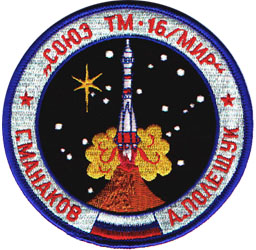
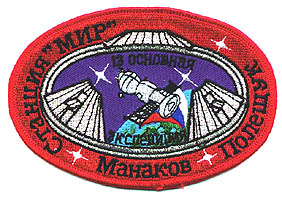
| Crew & Mission |
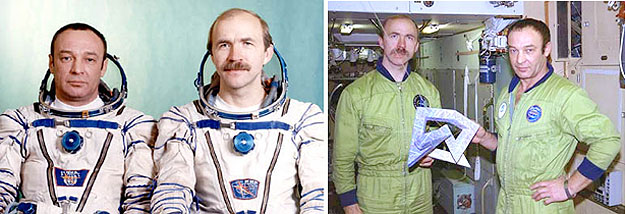
Mission
| The Flight Sokols |
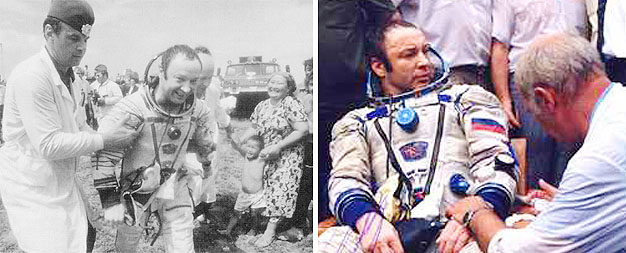
| The IVA suits |
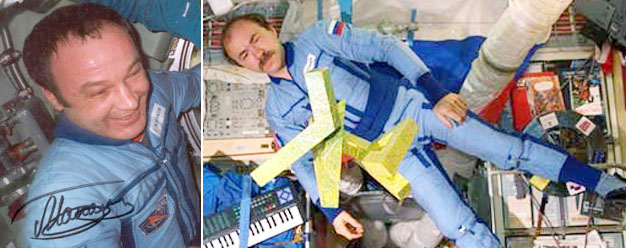
| The Orlan EVA-suits |
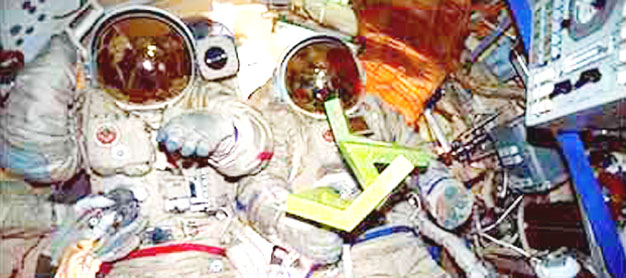
Text.
| Patch History |
Stewart was not new to the Soviet/Russian patch market. They had already reproduced the series of Interkosmos patches, a series of generic Soviet space related emblems and were also reproducing the internationally oriented Mir-patches for collectors, including Helen Sharman's Juno mission. They had marketed their product in British magazines such as Spaceflight and Spaceflight News.
During airshows in the early nineties, Stewart had come into contact with Russian spaceflight enthusiast Vadim Yevgeniyevich Molchanov, from Tula. He supplied the firm with commemorative designs for all non-international Soyuz-missions that did not have a flight patch, as well as personal designs for the cosmonauts.
At first, Stewart only produced the personal patches, as well as the commemorative Soyuz-1 to Soyuz-9 patches from Molchanov's designs. Kit, from the Stewart Aviation Design Department: ,,The earlier ones were made in retrospect from Vadims' designs. We had to space the production out a bit due to the cost, which was all born by us, as [the Russians] had no way of paying us."

The personal patches for Poleshuk and Manakov were the first in te series to be produced by Stewart Aviation. Probably, they were made and presented to the crew after the mission. Poleshuk was seen wearing the patch on a TK-suit during his visit to Alex Pancehnko's house in California; Manakov was wearing it on his TK-suit during training for Soyuz TM-24.
The series of designs made by Molchanov probably already included the latest mission, Soyuz TM-16, showing a Soyuz rocket rising from a vulcano, which was the crew's callsign. Stewart decided to produce this one as well, to continue their line of commemorative Mir-patches. Soyuz TM-16 was the first all-Russian mission in a long time, and did not have an official patch.
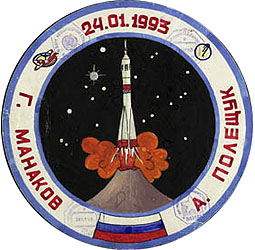
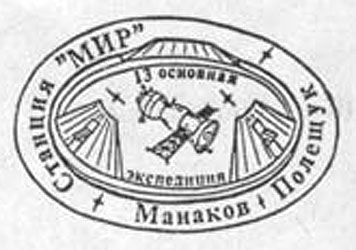 Left: The flown Vadim Molchanov artwork for the "launch"-patch. Right: The artwork for the EO-13 patch, drawn by Konstantin Lantratov, as it appeared on the cover of the January 18, 1993 issue of Novosti Kosmonavtiki. The Russian flag trailing the Soyuz, as seen in the embroidered patch, was added to the design in a later stage.
Left: The flown Vadim Molchanov artwork for the "launch"-patch. Right: The artwork for the EO-13 patch, drawn by Konstantin Lantratov, as it appeared on the cover of the January 18, 1993 issue of Novosti Kosmonavtiki. The Russian flag trailing the Soyuz, as seen in the embroidered patch, was added to the design in a later stage.Unknown to Molchanov, a second version of the mission patch was born at the same time in Moskow. It was drawn by Konstantin Lantratov of the Russian spaceflight "magazine" Novosti Kosmonavtiki (NK). The mission control center TsUP had recently demanded NK to discontinue the use of its logo in their magazine. It was replaced by a drawing showing the actual configuration of the Mir station, which, after a suggestion by editor Igor Marinin, was accompanied by a mission logo.
Lantratov: ,,It was December 1992 and Marinin charged me with the realization of the idea. I answered it to the extent of my possibilities, without having any artistic formation. Then I learned to manage primitive scanner and graphic computer programs. With the aid of these objects the emblem of EO-13 was born. The concept was simple. The crew of Gennadi Manakov and Aleksandr Poleshchuk flew with the new androgynous docking ring APAS-89. It became the basis of emblem. It went on the cover of the second issue of NK in 1993."
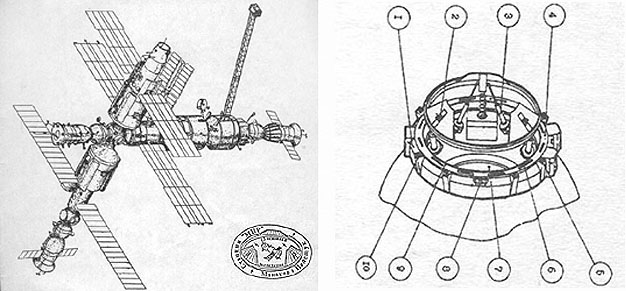
Left: The emblem appearing at the front page of Novosti Kosmonavtiki. Right: The drawing of the APAS-98 docking ring that inspired Lantratov for the shape of the patch.
The drawing caught the attention of Molchanov, himself a Novosti Kosmonavtiki reader. ,,Somewhere at the end of March a letter arrived letter from our friend Vadim Molchanov. He was well-known as a Mir expert. He personally knew many of the cosmonauts. Vadim was interested in emblems and had began to fill the enormous gap in the Soviet space past. In his letter, Vadim proposed to send the sketch of the E0-13 emblem to England. He asked: write what colors must be in the emblem, or better, draw it in color." (Novosti Kosmonavtiki was photocopied in black and white at that time).
,,To the initial version of emblem, I added a trail behind the Soyuz in the colors of the Russian flag. I only made a mistake with the letters: I forgot to indicate what color I wanted them. So they remained black. The emblems did arrive to Vadim by mail, and he immediately sent them to us. EO-13 had already ended, so we presented them to the crew three months after the landing."
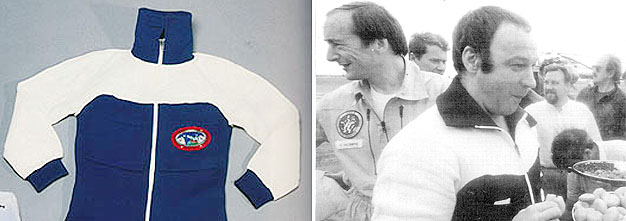
One of Manakov's PK-suits seen in the Sotheby's 1996 Russian Space History auction. The suit had been worn by Manakov during the mission and directly after landing. He was wearing it when he returned to Star City, near Moscow. The patch must have been added there later, since it was not ready in time for flight.
Neither of the embroidered patches is official: both patches were presented to the crew after the mission. We know from an auction, that Molchanov's TM-16 artwork was flown during the mission. At least two Novosti Kosmonavtiki magazines containing Lantratov's design, were also taken up into space by the Expedition-13 crew. Later that year, NK proudly showed a picture of numbers 3 and 4 of 1993 with onboard handstamps on their covers. Although the Lantratov patch could be seen attached to one of Manakov's suits in another auction, it was not flown. Since the patches arrived well after the mission, it must have been added at a later date.